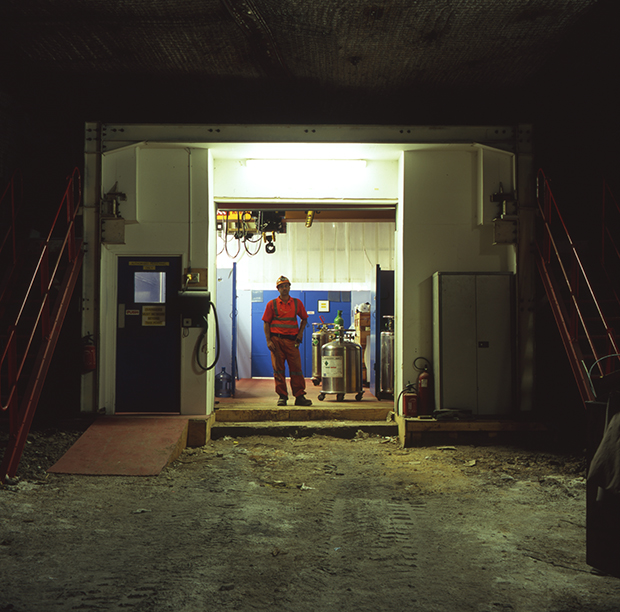
Home | Biography | Projects and Exhibitions | Recent Research | Reviews & Publications
Recent Research
Material Sight: re-presenting the spaces of fundamental science
The Laboratorie Nazionali del Gran Sasso (LNGS), accessed via the Traforo del Gran Sasso freeway tunnel.
Material Sight: re-presenting the spaces of fundamental science will explore how non-documentary photography and film might be used to embody a sense of material encounter at three world-leading research facilities for fundamental science. Funded by The Leverhulme Trust under their Research Fellowship scheme, the project will run from October 2016 to January 2018 and will be hosted by Arts Catalyst, London. Areas of fundamental science such as cosmology, particle physics and astrophysics operate at scales and levels of complexity that are beyond the imaginative and cognitive grasp of most lay-publics. Historically, western culture measured space and time through the body but over the centuries science and technology have pursued knowledge beyond the edges of perception, from the macro extremes of the multiverse to the micro-scale of the sub-atomic world. In response to this seemingly inexorable process of distancing, this research project employs non-documentary photography and film to bring science back within our world as experience – what the philosopher Edmund Husserl referred to as the ‘Life-World’ – by using still and moving imagery to place us in a bodily relation to the physical spaces and laboratories where fundamental science is performed.
Dr Sean Paling, Boulby Underground Laboratory, UK. 2009 Sited within a mountain in central Italy, the Laboratori Nazionale del Gran Sasso is the world’s largest underground research centre for particle physics; by contrast, at over a kilometre beneath the earth, Boulby Underground Dark Matter Laboratory occupies the UK’s deepest working mine. Both environments are distinguished by their powerful materiality yet the science being performed in them is both abstract and imperceptible. The third site I will be working with is the combined facilities at Durham University that include The Centre for Advanced Instrumentation and the Institute of Computational Cosmology where the super computer, COSMA, contributed to the creation of The Millennium Simulation used by scientists working in physical cosmology to compare observations with theoretical predictions. The excitement and curiosity of the research springs from the paradoxical relationship between the deeply-material, phenomenological presence of the environments on the one hand and the absent, immaterial nature of the science being pursued in them on the other. Within this context, I am interested if the material environment can actually be a conduit to cognitive understanding and, more specifically, if photography can embody the spaces of experimental science and present them back to scientists and nonscientists alike, not as illustrations of the technical sublime but as sites of phenomenological encounter.
|
|


